
How to Use Bar02 Pressure/Depth Sensor: Examples, Pinouts, and Specs
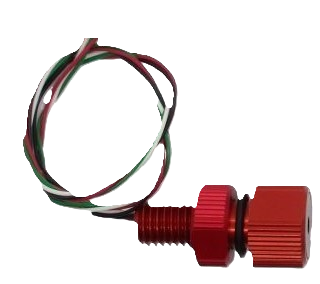
 Design with Bar02 Pressure/Depth Sensor in Cirkit Designer
Design with Bar02 Pressure/Depth Sensor in Cirkit DesignerIntroduction
The Bar02 Pressure/Depth Sensor from Blue Robotics is a high-precision sensor designed to measure the pressure of the environment around it, which can be used to calculate depth when submerged in a liquid, typically water. It is ideal for a wide range of applications, including oceanographic research, water level monitoring, and underwater vehicle depth determination.
Explore Projects Built with Bar02 Pressure/Depth Sensor
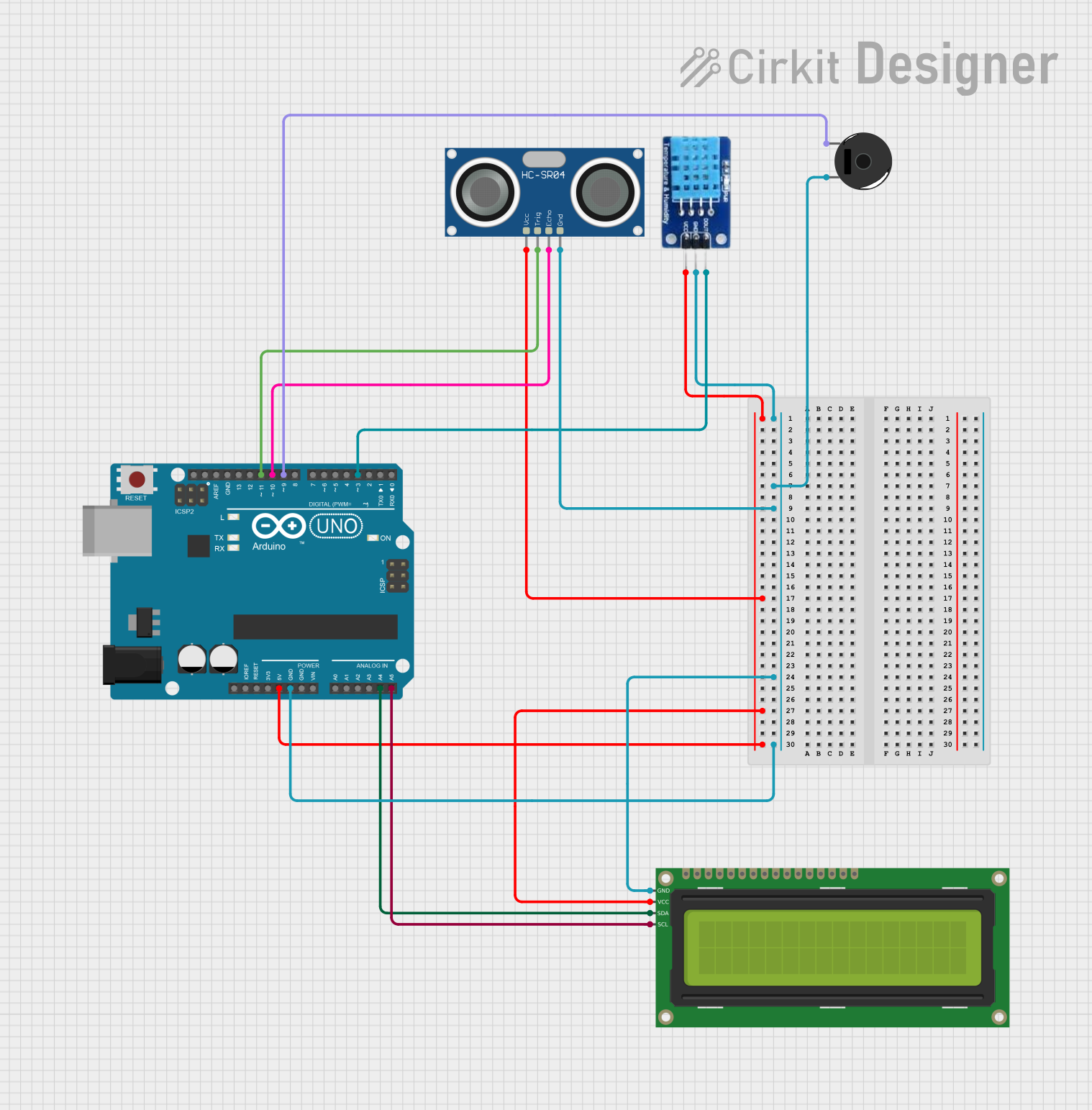
 Open Project in Cirkit Designer
Open Project in Cirkit Designer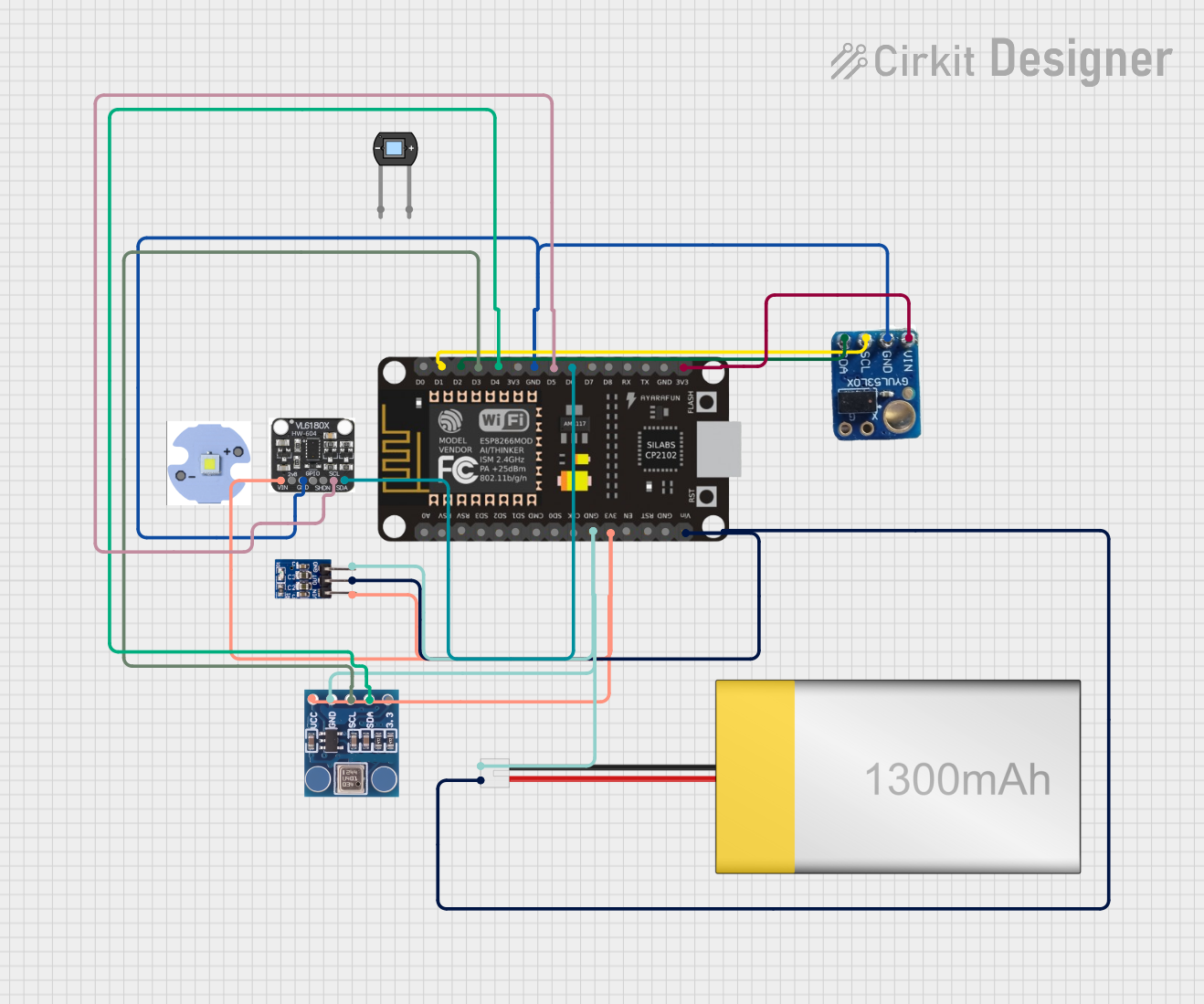
 Open Project in Cirkit Designer
Open Project in Cirkit Designer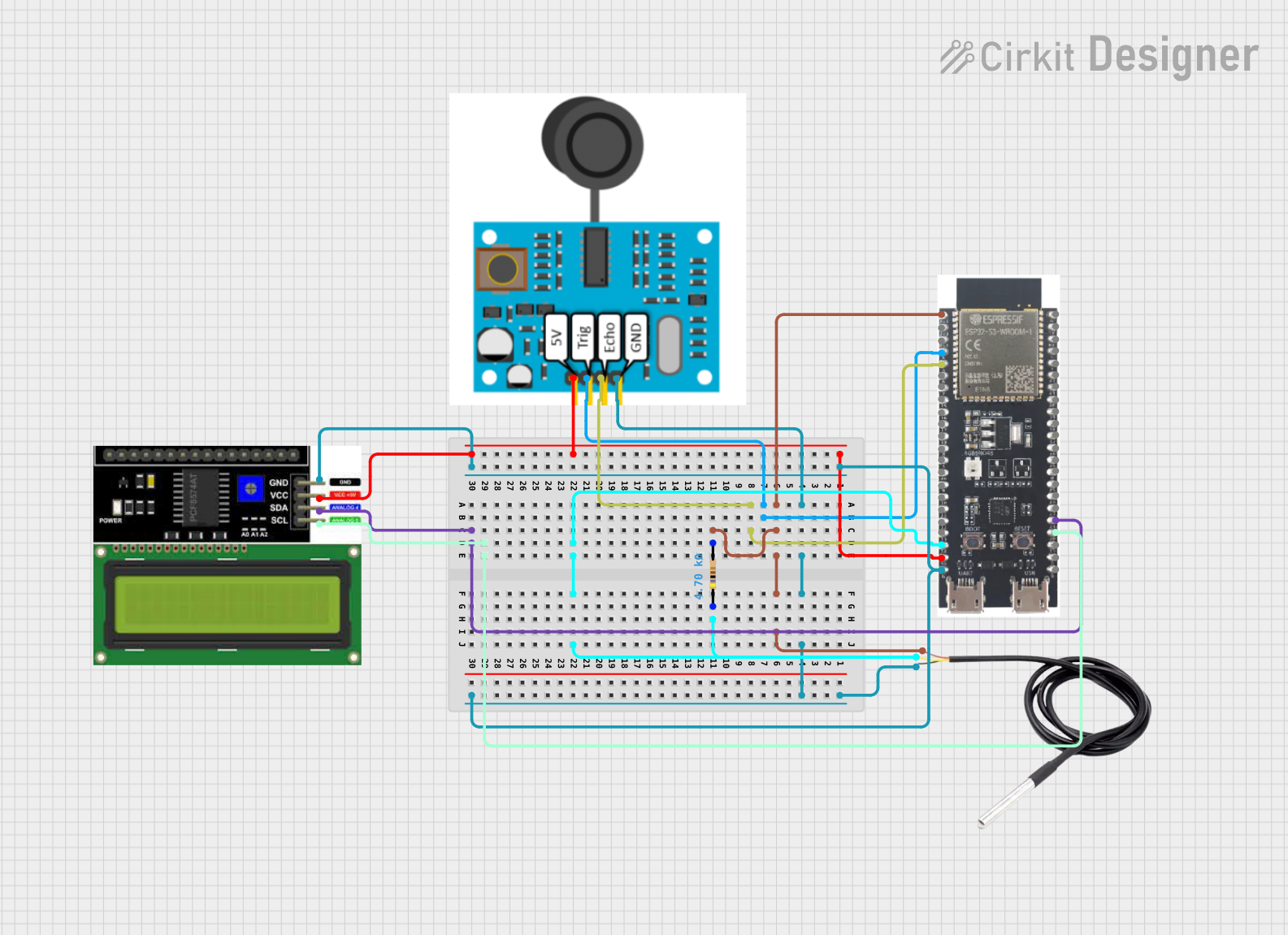
 Open Project in Cirkit Designer
Open Project in Cirkit Designer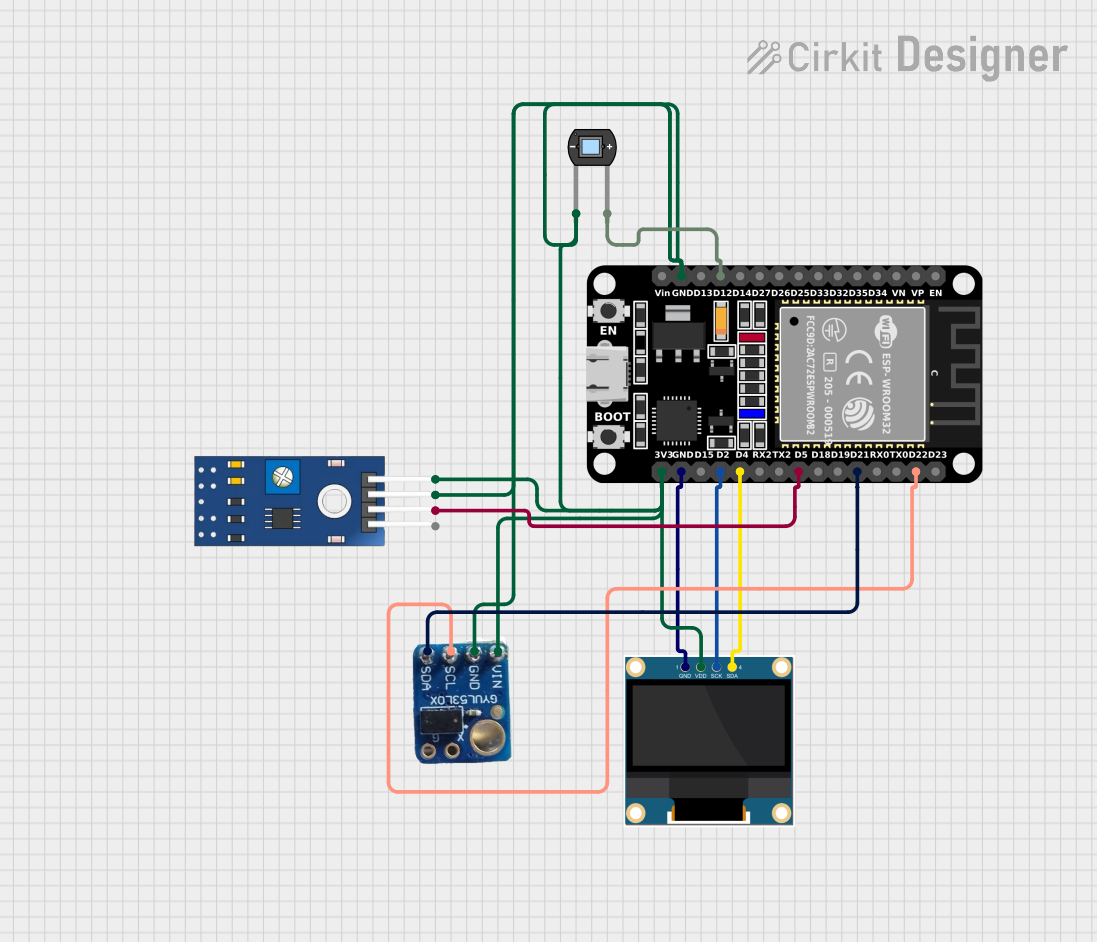
 Open Project in Cirkit Designer
Open Project in Cirkit DesignerExplore Projects Built with Bar02 Pressure/Depth Sensor

 Open Project in Cirkit Designer
Open Project in Cirkit Designer
 Open Project in Cirkit Designer
Open Project in Cirkit Designer
 Open Project in Cirkit Designer
Open Project in Cirkit Designer
 Open Project in Cirkit Designer
Open Project in Cirkit DesignerCommon Applications and Use Cases
- Underwater robotics and ROVs (Remotely Operated Vehicles)
- Water level monitoring in tanks and reservoirs
- Diving computers and depth gauges
- Environmental monitoring and oceanographic research
- Weather stations for barometric pressure readings
Technical Specifications
Key Technical Details
- Operating Voltage: 3.3V to 5V
- Pressure Range: 0 to 10 bar (0 to 145 psi)
- Depth Range: 0 to 100 meters (0 to 328 feet) in water
- Operating Temperature: -40°C to +85°C
- Accuracy: ± 0.1% FS (Full Scale)
- Resolution: 0.2 mbar (0.02 kPa)
- Output: I2C digital interface
Pin Configuration and Descriptions
| Pin Number | Name | Description |
|---|---|---|
| 1 | VCC | Power supply (3.3V to 5V) |
| 2 | SDA | I2C Data line |
| 3 | SCL | I2C Clock line |
| 4 | GND | Ground |
Usage Instructions
How to Use the Component in a Circuit
- Power Supply: Connect the VCC pin to a 3.3V or 5V power supply from your microcontroller or power management board.
- Data Lines: Connect the SDA and SCL pins to the corresponding I2C data and clock lines on your microcontroller.
- Ground: Connect the GND pin to the ground of your system.
Important Considerations and Best Practices
- Ensure that the power supply is within the specified voltage range to prevent damage.
- Use pull-up resistors on the I2C data lines if they are not already present on your microcontroller board.
- Keep the sensor away from direct sunlight and sources of heat to maintain accuracy.
- When used underwater, ensure that the sensor's housing is properly sealed against water ingress.
- Calibrate the sensor if necessary, especially for precise depth measurements.
Example Code for Arduino UNO
#include <Wire.h>
// Bar02 I2C address (check datasheet for your sensor's address)
const byte sensorAddress = 0x76;
void setup() {
Wire.begin(); // Initialize I2C
Serial.begin(9600); // Start serial communication at 9600 baud
}
void loop() {
Wire.beginTransmission(sensorAddress);
// Request 3 bytes from the sensor
Wire.requestFrom(sensorAddress, 3);
if (Wire.available() == 3) {
// Read the bytes if available
byte highByte = Wire.read();
byte midByte = Wire.read();
byte lowByte = Wire.read();
// Combine the bytes into a 24-bit number
long pressure_raw = (long)highByte << 16 | (long)midByte << 8 | lowByte;
// Convert the raw value to pressure in mbar
double pressure_mbar = pressure_raw / 4096.0;
// Print the pressure value to the serial monitor
Serial.print("Pressure: ");
Serial.print(pressure_mbar);
Serial.println(" mbar");
}
Wire.endTransmission();
delay(1000); // Wait for a second before reading again
}
Troubleshooting and FAQs
Common Issues Users Might Face
- Inaccurate Readings: Ensure the sensor is calibrated and not exposed to rapid temperature changes.
- No Data on I2C: Check the wiring, ensure pull-up resistors are in place, and verify that the correct I2C address is being used.
- Sensor Not Responding: Make sure the sensor is powered with the correct voltage and the ground is properly connected.
Solutions and Tips for Troubleshooting
- Calibration: Follow the manufacturer's instructions for calibration to ensure accuracy.
- Wiring Check: Double-check all connections and solder joints for reliability.
- Pull-Up Resistors: If data is not being received, add 4.7kΩ pull-up resistors to the SDA and SCL lines.
- I2C Scanning: Use an I2C scanner sketch to confirm the sensor's address and connectivity.
FAQs
Q: Can the Bar02 sensor be used in saltwater? A: Yes, but ensure that the sensor's housing is appropriate for saltwater use to prevent corrosion.
Q: What is the maximum depth the Bar02 sensor can measure? A: The sensor can measure depths up to 100 meters (328 feet) in water.
Q: How do I convert pressure readings to depth? A: Depth in meters can be approximated by dividing the pressure in mbar by 100 (assuming freshwater and standard gravity).
Q: Is the sensor temperature compensated? A: Yes, the Bar02 sensor includes temperature compensation for accurate readings over its operating temperature range.